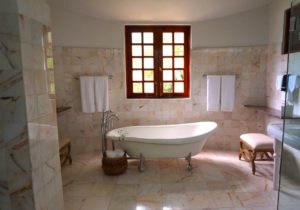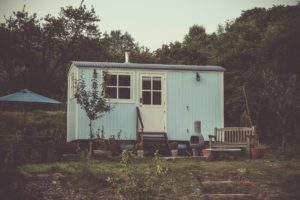Choosing Bathroom Flooring
People who pay attention while choosing bathroom flooring, lighting, and wall color have a better living space and a nicer [...]
P eople who pay attention while choosing bathroom flooring, lighting, and wall color have a better living space and a nicer bathroom as compared to those who don't. Their bathroom space might even become a place that helps them relax! People overlook the value of their bathrooms, even though they are places where people may find a moment of calm in their hectic life and should be given the same priority as the rest of the house.
Mentioned below are materials that can be used as bathroom flooring, and each one of these is different from the other. All materials mentioned below are useful in their way.
Tile Flooring
Tiles are one of the most vastly used bathroom flooring materials globally. There are many reasons why people prefer tiles over many other materials and why tiles are considered the best substance to cover the bathrooms' floors. The most common type of tiles is ceramic tiles which are non-porous, which means that they don't absorb any substance easily.
As many new corrosive detergents have been developed to kill germs in the bathrooms, these liquids tend to damage the flooring which is why tiles are preferred as they tend not to get damaged easily.
Tiles are also easier to clean in wet environments because they do not trap water and allow germs and mold to grow and eat away at the flooring. They are also better conductors of radiant heating, so they last longer than many other materials even after expanding in the winter and contracting during the summer by stopping the heat from passing.
When being made, patterns and colors can be added to tiles, and any shapes can be given to them as requested by the customer.
Tiles can help give any bathroom a personal touch of the owner. Since tiles are long-lasting and can withstand most damage, they are extremely cost-effective and require the least amount of care compared to all other materials. It is also easy to replace tiles if they do end up getting damaged. The sectioning allows quick removal and replacement of the damaged tile.
Vinyl Flooring
Vinyl can survive for up to 20 years if it is properly maintained. The material is durable and water-resistant, making it an excellent choice for bathroom floors and walls. If done correctly, the installation of vinyl can be a pretty simple task and can be carried out by anyone.
When installing it, the only thing to ensure is that the ground is fully dry and flat. The water won't do any harm after the vinyl has been installed properly.
No matter how hard it may seem, vinyl is one of the easiest types of flooring to keep clean. A damp mop and vinyl cleaner can remove dirt or stains from the floor to prevent scratches and damage to the surface by almost anyone who wants to do it.
Vinyl is a water-resistant material, making it a good choice for bathrooms and other areas with a lot of moisture. The most significant advantage is that many excellent wood-based designs to choose from. As a result, a flooring solution that appears to be costly is easily accessible and can give any bathroom an expensive look just by being visually similar to wood.
Engineered Wood
Engineered wood's benefits are similar to the other materials listed, which is why it is a viable option for bathroom flooring. There are certain advantages to engineered wood flooring: it is less sensitive to water damage than hardwood and it can be cleaned without causing any permanent harm in the case of a spill.
It is possible to sand down existing scuff marks on your engineered wood, or you can apply a fresh finish to completely transform the material's appearance. With engineered wood, you may save both time and money if you want to lay your flooring. Engineered wood flooring is significantly less expensive than hardwood flooring, such as maple, and may be utilized in bathrooms without fear of costly water damage replacements.
As compared to hardwood which corrodes easily in damp conditions, engineered wood is a much better alternative as it can last way longer in damp conditions as opposed to any other kind of natural wood.
While all of these materials are useful one way or another, it’s important to keep in mind the aesthetic and theme that you’re going for when choosing bathroom flooring.










